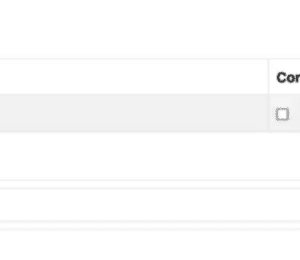Augmenting the client with HTMX
- October 14, 2024
- 3852 Unique Views
- 4 min read
This article is part of a series comparing different ways to implement asynchronous requests on the client to augment the latter. So far, I described the process with Vue.js and Alpine.js. Both are similar from the developers' point of view: they involve JavaScript.
In this post, I'll focus on HTMX, whose approach is quite different.
Laying out the work
I'll follow the same structure as in the previous posts of the series. Here's the setup, server- and client-side.
Server-side
Here is how I integrate Thymeleaf and HTMX in the POM:
<dependencies>
<dependency>
<groupId>org.springframework.boot</groupId>
<artifactId>spring-boot-starter-web</artifactId> <!--1-->
</dependency>
<dependency>
<groupId>org.springframework.boot</groupId>
<artifactId>spring-boot-starter-thymeleaf</artifactId> <!--1-->
</dependency>
<dependency>
<groupId>org.webjars</groupId>
<artifactId>webjars-locator</artifactId> <!--1-->
<version>0.52</version>
</dependency>
<dependency>
<groupId>org.webjars.npm</groupId>
<artifactId>htmx.org</artifactId> <!--2-->
<version>2.0.1</version>
</dependency>
</dependencies>
- Same as with previous frameworks
- The HTMX dependency
Client-side
The code on the HTML side is straightforward :
<script th:src="@{/webjars/htmx.org/dist/htmx.js}" src="https://cdn.jsdelivr.net/npm/[email protected]/dist/htmx.min.js"></script> <!--1-->
- Add the HTMX dependency
Working with HTMX
We want to implement the same features as previously.
HTMX implements a radical approach that is different from traditional AJAX frameworks. They force you to develop an HTTP API that accepts and returns JSON. With HTMX, you return HTML fragments instead. HTMX uses it to replace the DOM elements that you configured.
Hence, you need to write neither JavaScript nor deal with JSON and serialization of entities.
Designing the fragments
HTMX nicely complements Thymeleaf because both work with page fragments. We can align Thymeleaf's fragments to HTMX's responses. It requires thinking ahead, which differs from the previous AJAX/API/JSON standard, but it's worth it.
Let's list interactions and what fragment we replace for each of them:
- Load the page: the whole page is rendered server-side, it's not asynchronous
- Click the completed checkbox on a line: the line is replaced with the underlying todo's new state. We didn't do anything client-side with previous frameworks; we will ignore it as well.
- Clean up completed tasks: replace the todo table's lines with lines of uncompleted tasks
- Add a new todo: replace the table with all lines plus the new one and replace the label field with an empty field to reset it. The Add field and button were in the table's footer in previous designs. There's no reason to change this.
Here's the conceptual fragments design for our app:
-------------------- APP -------------------- | index.html | | | | ---------------- TABLE ---------------- | | | table.html | | | | | | | | ------------- LINES ------------- | | | | | lines.html | | | | | | | | | | | --------------------------------- | | | --------------------------------------- | ---------------------------------------------
I'll split the HTML page into these fragments. Because we render them via Thymeleaf, we can split each into their dedicated file for a cleaner separation. At initial load time, we use Thymeleaf's replace directive; we use HTMX for asynchronous client-side interactions.
Our first interaction
We will start with the cleanup feature, as it's the easiest one with HTMX.
Here's the HTML code:
<tbody id="lines">...</tbody> <!--1-->
<button class="btn btn-warning"
hx-trigger="click" <!--2-->
hx-delete="/htmx/todo:cleanup" <!--3-->
hx-target="#lines"> <!--4-->
Cleanup
</button>
- Define the
linesDOM element - HTMX triggers on the
clickevent - HTMX will send a
DELETEHTTP request to the URL - When the HTML fragment response comes back, HTMX replaces the
linesDOM element with it
Note that there's no explicit JavaScript involved, not a single line of code. HTMX takes care of it.
On the server side, the code is the following:
fun htmx(todos: MutableList<Todo>) = router {
DELETE("/htmx/todo:cleanup") {
todos.removeIf { it.completed } //1
ok().render("htmx/lines", mapOf("todos" to todos)) //2
}
}
- Regular cleanup
- Use the
render()function, instead ofbody()for API calls. Because of our previous file split, we can render only the needed HTML fragment. It uses Thymeleaf for any necessary server-side rendering.
That's the heart of HTMX: bind an HTTP call to a client-side event, and replace the configured DOM element with the server response.
Adding a new todo follows the same principle, but the DOM element is the whole table to reset the label value. If interested in the complete, look at the code.
Marking a todo complete
While I mentioned that we will not return anything from the check request, it presents an exciting challenge. That's the reason why I am only addressing it now.
We have two challenges when clicking on the checkbox:
- send the state of the checkbox as the JSON payload to update it server-side
- get and use the ID of the
todo
HTMX offers the hx-vals for the JSON payload. However, the URL is different for each row as we want to include the ID in the path. We must generate it server-side with Thymeleaf. TIL: Thymeleaf can manage any HTML attribute prefixed with th:: it will process the value as usual and write the attribute's name unprefixed.
<input type="checkbox"
th:checked="${todo.completed}" <!--1-->
hx-trigger="click" <!--2-->
th:hx-patch="'/htmx/todo/' + ${todo.id}" <!--3-->
hx-vals='js:{"checked": event.target.checked}' /> <!--4-->
- Regular Thymeleaf syntax to check the box if the
todois completed - HTMX triggers on
clickevents - Send a
PATCHrequest to the server, with Thymeleaf having replaced theidwith the value in the HTML previously - Static request JSON payload
Note that, as explained above, I ignored the response. In a real-world scenario, you should check/uncheck the checkbox depending on the value returned to avoid keeping the server state and the UI in synch.
Conclusion
In the two previous articles, I described Vue and Alpine. We configured Spring Boot to return JSON. With HTMX, we configured it to return HTML. Additionally, we didn't need any JavaScript code to send the requests from the client.
Icing on the cake, there's a great synergy between Thymeleaf and HTMX: we can split the page into fragments and reuse them on both sides.
The complete source code for this post can be found on GitHub.
To go further:
Originally published at A Java Geek on October 6th, 2024
Don’t Forget to Share This Post!









Comments (1)
Jackson Sardello
1 year agoI was shocked how short this article was as compared to Vue and Alpine, but I probably shouldn't be. Once you understand what HTMX is trying to accomplish, it's kinda like sprinkling magic fairy dust onto your codebase. I've been having a lot of fun playing around with the Thymeleaf/HTMX combo recently.